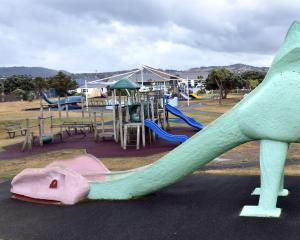Dunedin is not the first city to decide significant cycleway investment is needed. Around the world, cities have been doing similar things for decades, and continue to do so. Reporter Craig Borley asked four of them for their experiences.
Spokesman for the City of Vancouver, Canada
Encouraging a shift to walking, cycling and transit from motor vehicles is a big change for people.
At first there was a lot of focus on loss of motor vehicle lanes, loss of on-street parking, changes to traffic patterns and to property access.
Vancouver has a vision to be the greenest city in the world. To achieve this target, we are committed to making cycling safe, comfortable, convenient and fun for people of all ages and abilities. Key areas we are working on include. -
• Building routes that are comfortable and convenient.
• Providing secure and abundant parking.
• Focusing on education and safety.
• Promoting cycling as an everyday option.
Spokesman for Trondheim Kommune, Norway
All growth in transport in the bigger, fast-growing cities in Norway (like Trondheim) must be on foot, by bicycle, bus or tram. This is a political aim.
The main goal is the reduction of CO2 emissions. The bonuses are reduced traffic jams, reduced investments in transport infrastructure and a more healthy population.
To reach this aim, we must get more people to bike instead of go by car. It's so simple. We know from cities in countries like Denmark, Holland and Germany that better cycling infrastructure is the best way to encourage people to cycle.
Most important: It works here in Trondheim. Bicycling in and out of central Trondheim increased by 40% in the period 2010-14.
The attitude [towards cycling] has changed from negative to positive; 56% think it's better to cycle now than two years ago. Only 16 % find cycling in Trondheim not safe.
People seem to acknowledge that bikers remove traffic jams and save money for the community. This is what we tell the population: bikers are valuable, investment in cycling lanes is smart.
Transport for London managing director of surface transport Leon Daniels, United Kingdom
We are investing nearly £1billion ($NZ2.36billion) in upgrading the existing Cycle Superhighways with greater segregation, introducing major new segregated cycle routes and backstreet quiet routes, and overhauling dozens of junctions both on our roads and on borough roads, to give more protection to pedestrians and cyclists.
Delivering such major improvements will take time, but we are working flat-out to do so.
Work on upgrading [cycling] Superhighways and major junctions all across London is happening right now.
We are introducing the UK's first Safer Lorry Scheme in September and have also been pushing for freight vehicle designs to be radically improved at both a national and European level.
Over the forthcoming weeks and months, Londoners will see major improvements for cyclists delivered on our roads.
City of Copenhagen bicycle programme manager Marie Kastrup, Denmark
For Copenhagen, cycling in itself is not a singular goal. However, we see that cycling is a very effective tool to make our city more attractive.
Increasing cycling brings cleaner air, better traffic flow, more liveable streets and happier and healthier citizens. Therefore, our experience is that a city where many choose to bicycle is a city that is better for everyone in general.
This is due to a number of reasons. -
• Bicycles take up less space than motorised traffic, thus freeing more public space for urban life, green surroundings - and even create better traffic flow for the remaining cars and buses.
• Bicycles reduce air and noise pollution, limiting health costs and increasing life quality and liveable surroundings.
• Bicycles improve physical activity and thus reduce illness and mortality considerably.
• Bicycles help calm traffic in cities, making urban spaces more attractive, generating more outdoor public life and reducing accidents.
• Bicycles reduce CO2 emissions.
• Bicycle infrastructure is far cheaper both to construct and maintain then infrastructure for motorised transportation.
One example is our latest bicycle bridge, the Cycle Serpent. It provides a pleasant shortcut for over 10,000 daily cyclists.
Measured in time-saving benefits alone, the bridge will have paid its way within seven years.
The positive benefits of bicycle infrastructure surpass most traditional infrastructure projects by far. We also have data showing that cycling customers generate more revenue in street-level shops than car drivers per year.













